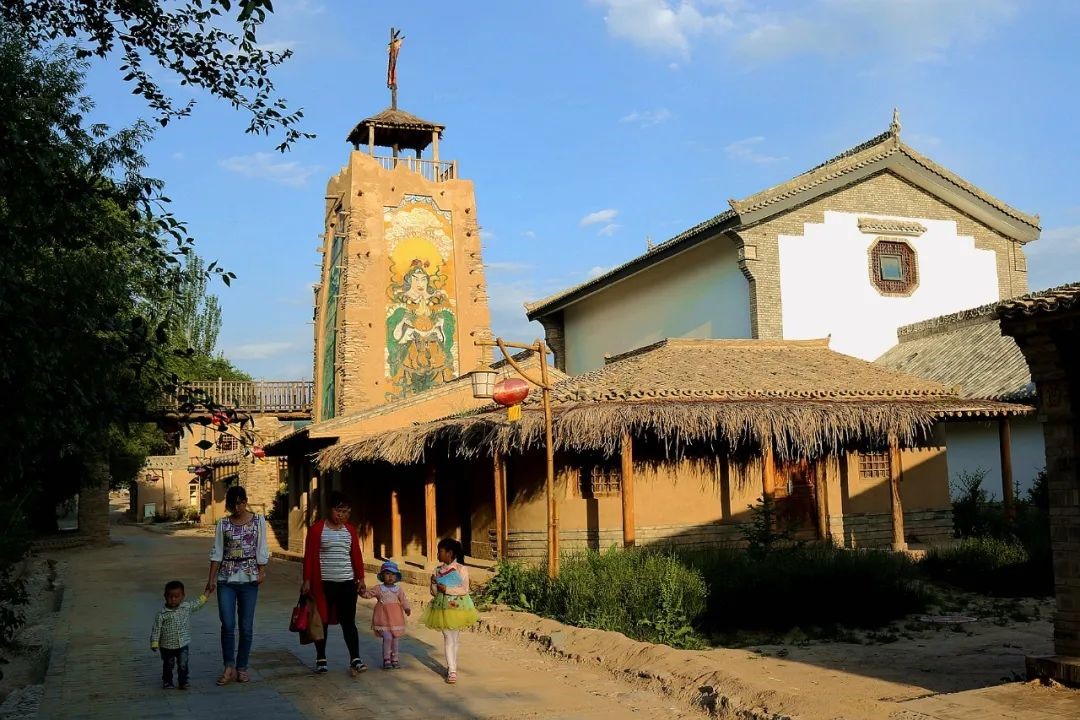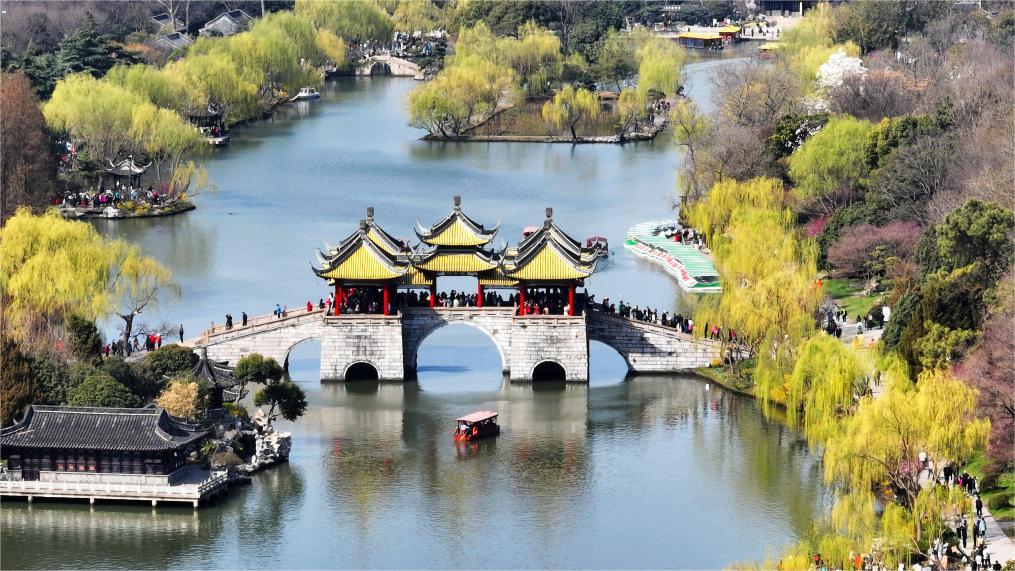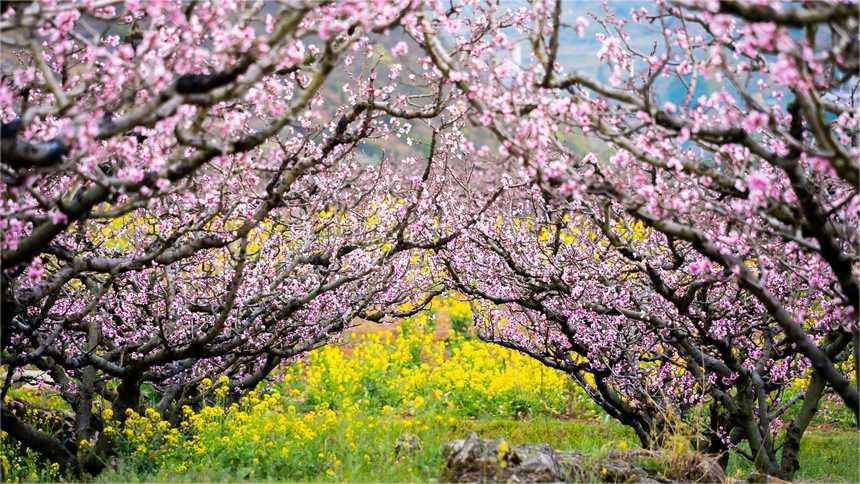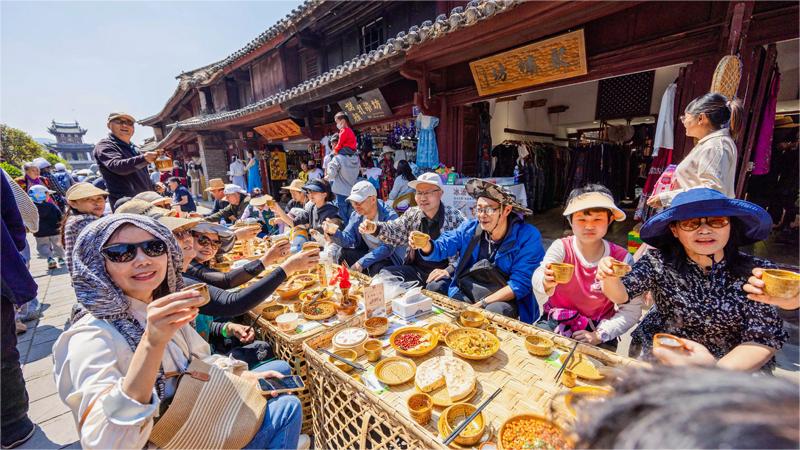Village in Ningxia prospers in tourism thanks to utilization of local culture

Photo shows the Old Lanes. (Photo courtesy of the publicity department of the Communist Party of China Longde county committee)
In the village of Hongya in Longde county, Guyuan, northwest China's Ningxia Hui autonomous region, a bonfire crackled merrily on a lively night. Young people and children gathered around the fire, mustering their courage to run, jump, and leap over the flame, welcoming the arrival of spring.
"Liaogan" is a folk custom in northwest China, said Yang Guoquan, a resident in the village, adding that jumping over the bonfire symbolizes warding off illness and disasters.
"Once the Liaogan Festival is over, spring will arrive," Yang said. "The best Liaogan activities in Guyuan are in our Old Lanes."
"The more vibrant our folk customs are, the happier the villagers feel, and the more tourists come. Some say it is the cultural essence of the Old Lanes that has allowed us to profit from the cultural industry," Yang told People's Daily.
The "Old Lanes" Yang referred to is an old street in Hongya village, which is covered by bluestone pavement and lined on the two sides with stone walls whose crevices are filled with yellow mud. The traditional architectural style of the Liupan Mountain area where the Hongya village is located, is well preserved.
In 2010, Longde county launched a renovation plan to protect the well-preserved residential houses along the old street and named the street "Old Lanes." In 2016, the second phase of renovation of Hongya village began, transforming this national-level traditional village into a scenic area.

Yang Guoquan poses for a picture in front of his paper-cutting works. (People's Daily Online/Wang Jing)
Though the village was turned into a scenic area, the villagers still had to live there. Therefore a meeting was held to discuss the future of the village.
"In the past, we all made a living by farming," said Zhang Hongsheng, Party head of the Hongya community. It were the village cadres that brought back tourism experiences from other villages that encouraged Hongya to develop tourism, Zhang recalled.
Soon after, many agritainment businesses sprang up along the Old Lanes. Yang started a B&B hotel with an investment of 50,000 yuan ($6,946.28), while villager He Gong converted his courtyard into a restaurant, building 18 private dining rooms.
However, when the villagers calculated their accounts, most of them found themselves operating at a loss.
"Business was decent at first, but it gradually declined. The Old Lanes lacked tourist attractions, making it difficult to retain visitors for long," a villager said.
"These small courtyards looked nice, but the quality was still not up to par," said another.
To help solve the problem, villagers voiced their various ideas. "It's not enough for us to have just a scenic area. We need something special and unique to attract visitors," said He, suggesting they capitalize on the "old" of the Old Lanes by tapping into its cultural heritage.
Once this direction was set, concrete plans followed - opening traditional handicraft workshops, introducing exhibitions of Longde's intangible cultural heritage, promoting local specialty hot pot dishes... Yang also leveraged his paper-cutting skills, opening a paper-cutting workshop.
Holding the paper with his left hand, scissors in his right, Yang made a big cut for the basic outline, then meticulously carved out intricate patterns. In no time, a Chinese character "chun" (spring) in the shape of a peach emerged from his cuts.

Tourists visit the Old Lanes. (Photo from the official account of the Longde bureau of culture, tourism, broadcast and television on WeChat)
"Paper-cutting was just a hobby of me, and I never thought it could become something big when combined with tourism," said Yang, who is now a municipal-level inheritor of the intangible cultural heritage of paper-cutting. The popularity of his workshop has livened up his B&B hotel.
Nowadays, paper-cutting is not the only intangible cultural heritage in the Old Lanes. During the initial renovation, eight connected old courtyards in Hongya village were preserved, exhibiting traditional intangible cultural heritage items like Wei-style brick carvings, local folk celebration, Yang-style clay sculptures, and more. Each courtyard has its unique attraction, and together they form an interconnected cultural space.
"Activities are frequently held in the courtyards, with live demonstrations of clay sculpting, face mask painting, and shadow puppetry performances. The melodious tunes of local opera are more attractive than any hawking," said Zhang.
The cultural attractions have boosted business. Visitors are streaming into the Old Lanes year-round, and He's courtyard restaurant is always packed. "During the peak period in summer, our daily revenue can reach 20,000 yuan," said He.
Nowadays, the Old Lanes scenic area has 48 businesses, including calligraphy and painting studios, restaurants, B&B hotels, and gift shops. The annual average disposable income there has risen from just a few thousand yuan before the renovation to 26,000 yuan in 2023. In 2022, the scenic area welcomed around 350,000 visits and generated a direct revenue of 20 million yuan.
"The charm of Hongya village lies in its vibrant culture," said Zhang. Many scenic villages across China have become purely commercial spots, while Hongya village has preserved a rare authenticity, he added.
Photos
Related Stories
Copyright © 2024 People's Daily Online. All Rights Reserved.









